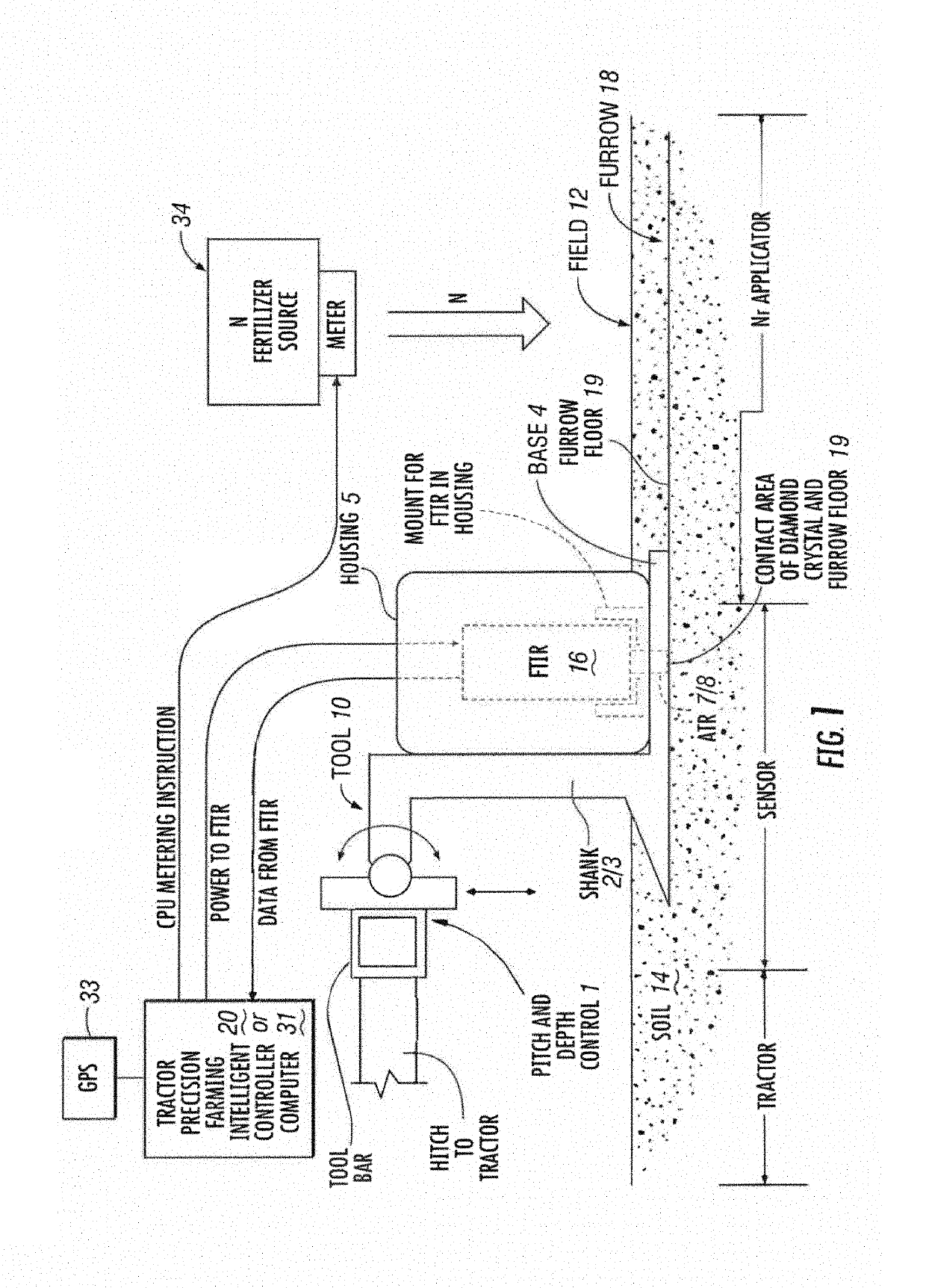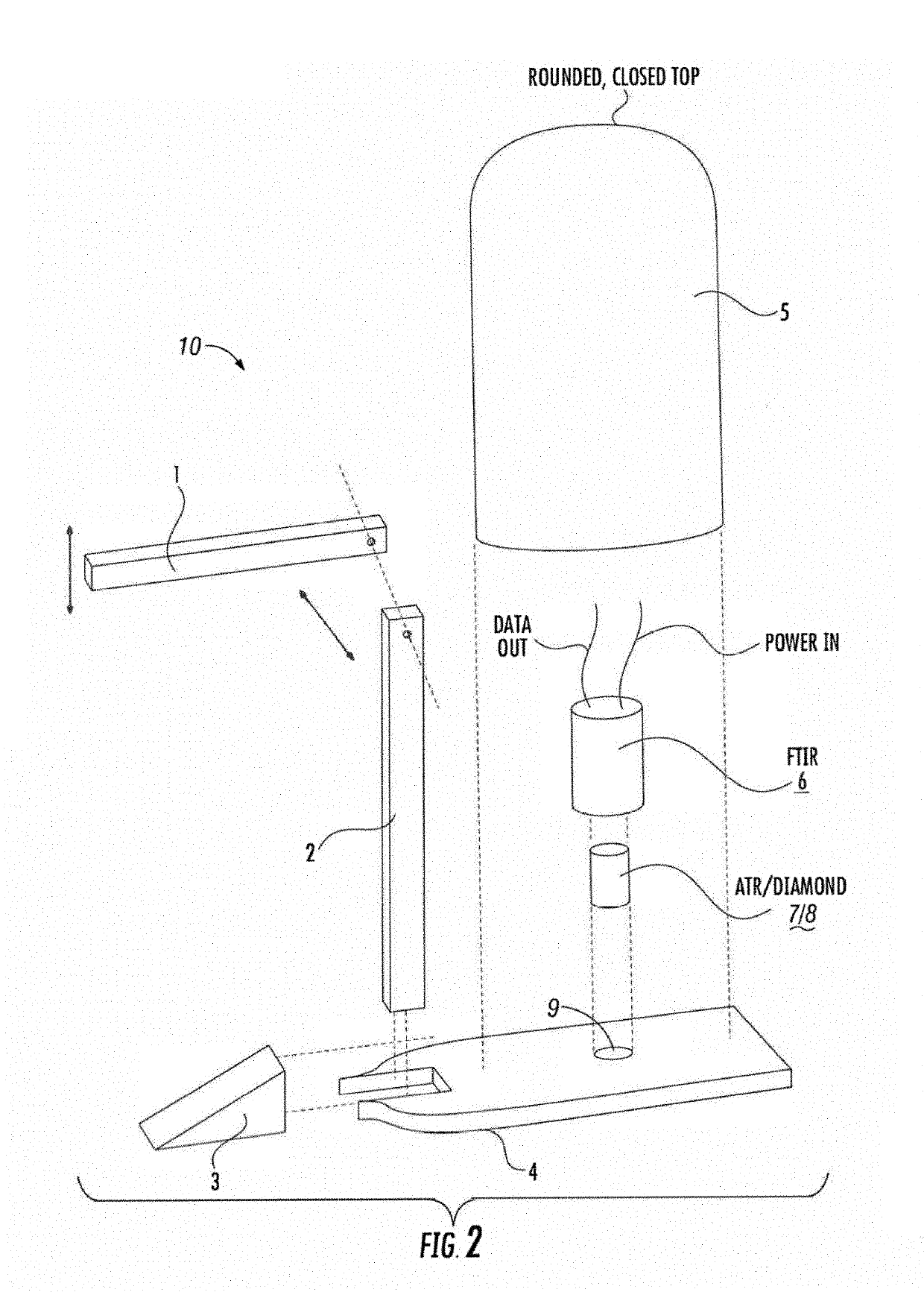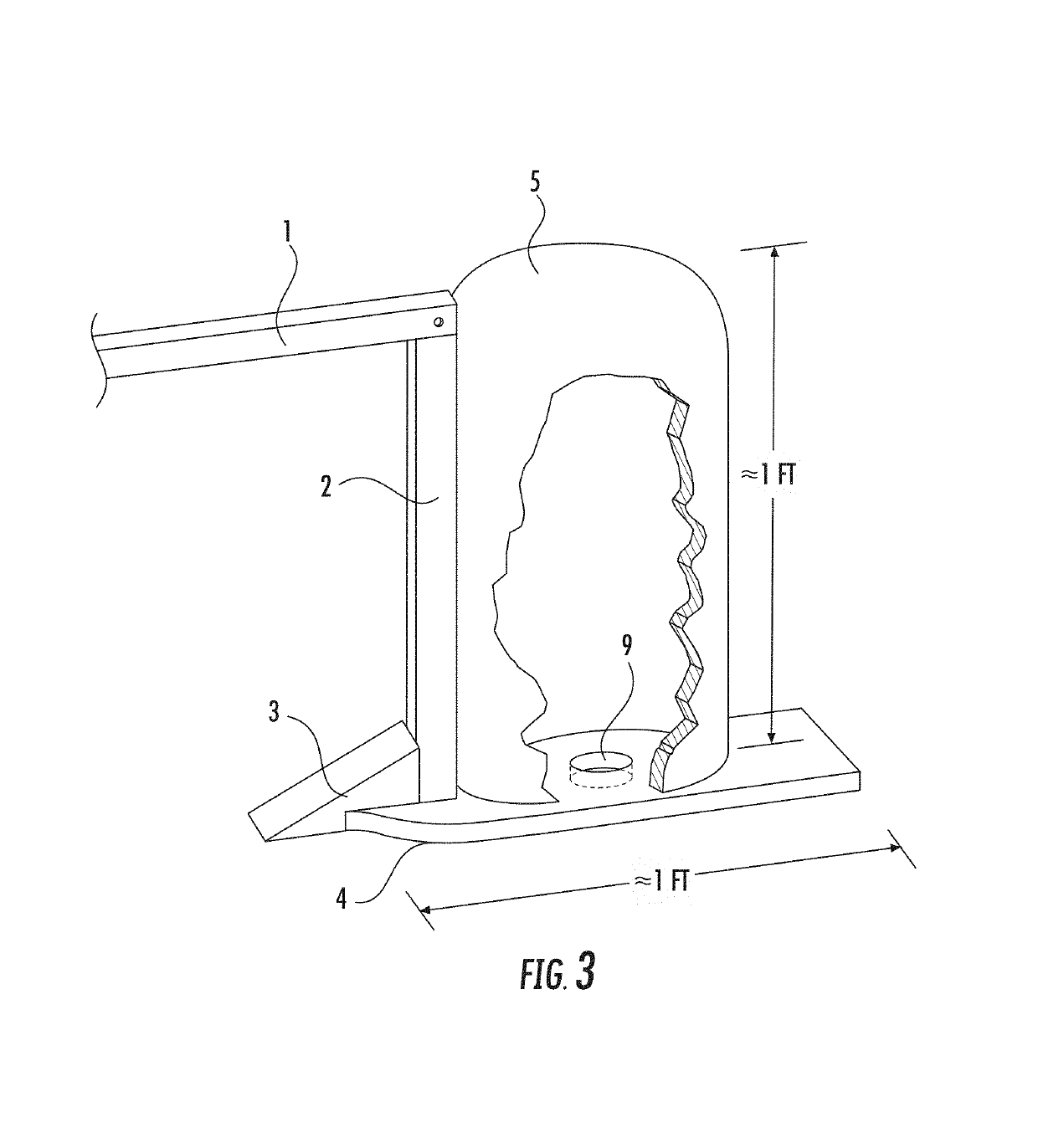Soil nitrate sensing system for precision management of nitrogen fertilizer applications
a technology sensing system, which is applied in the field of soil nitrate sensing system for precision management of nitrogen fertilizer application, can solve the problems of crop too tall, 3/sub>sup>/sup> that is present in the soil during the early spring, and is vulnerable to leaching and/or denitrification losses, etc., and achieves the effect of facilitating precision application of nitrogen fertilizer
- Summary
- Abstract
- Description
- Claims
- Application Information
AI Technical Summary
Benefits of technology
Problems solved by technology
Method used
Image
Examples
example 1
[0112]The following discussion gives context to the genesis and development phases which have or will occur with the invention and its aspects and, in particular, to the variety of factors and considerations that can be involved in providing a technical solution to the problems in the state of the art identified and addressed by the inventors.
[0113]Phase 1: The purpose of the Phase 1 study is to determine whether or not it is possible to measure soil NO3− concentrations with sufficient accuracy using the Agilent 4100 Exoscan FTIR Spectrometer with the diamond ATR accessory. The scope of this laboratory study will involve 5 different soil types amended with KNO3 to achieve approximately 0, 25, 50, and 100 mg kg−1 NO3− concentrations. Analyses will be run with samples prepared at three different soil moisture levels to assess the impact of soil moisture on the accuracy of soil NO3− concentration predictions. Sample presentation with the ATR system will be both static and dynamic. Vari...
example 2
[0116]The basic data obtained are D-ATR-FTIR spectra of the soil. An example of a soil D-ATR-FTIR spectra is shown in FIG. 12. This spectra was obtained by pressing a D-ATR-FTIR spectrometer into a soil by hand. The nitrate peak is evident in the spectra as a broad hump between 1300 and 1500 cm−1.
[0117]Several chemometric steps are used to estimate soil nitrate concentrations from the D-ATR-FTIR spectra. During a field operation individual spectra are acquired in less than 1 second, hence during operation a continuous stream of spectra will be uploaded to the computer. The data can either be stored and processed later, or processed in-real-time. One example of basic steps that can be used to process the data include: 1) filtering the data to throw out unacceptable spectra, 2) normalization which involves subtracting the mean and dividing by the standard deviation of intensity values for each wavenumber obtained from a calibration set of spectra, 3) averaging several contiguously col...
example 3
dies
[0131]Development of Field Mobile Soil Nitrate Sensor to Facilitate Precision Fertilizer Management
[0132]The Late Spring Nitrate Test (LSNT), also known as the pre-side dress nitrate test (PSNT), is an established tool for N fertility management in corn production. Although shown to be effective for improving NUE (nitrogen uptake efficiency) and reducing NO3− leaching losses, the LSNT is not widely used by farmers, because of its cost, low spatial resolution, and the time delay between soil sampling and the availability of a N fertilizer prescription increases risk for farmers. The overall goal of our research is to develop soil NO3− sensor technology that can be attached to farm implements and used to determine in-real-time on-the-go soil NO3− concentrations with sufficient accuracy to facilitate precision application of nitrogen fertilizers. We used diamond-attenuated total internal reflectance (D-ATR) Fourier Transform Infrared (FTIR) spectroscopy as the basis for the soil NO...
PUM
| Property | Measurement | Unit |
|---|---|---|
| depth | aaaaa | aaaaa |
| depth | aaaaa | aaaaa |
| depths | aaaaa | aaaaa |
Abstract
Description
Claims
Application Information
 Login to View More
Login to View More - R&D
- Intellectual Property
- Life Sciences
- Materials
- Tech Scout
- Unparalleled Data Quality
- Higher Quality Content
- 60% Fewer Hallucinations
Browse by: Latest US Patents, China's latest patents, Technical Efficacy Thesaurus, Application Domain, Technology Topic, Popular Technical Reports.
© 2025 PatSnap. All rights reserved.Legal|Privacy policy|Modern Slavery Act Transparency Statement|Sitemap|About US| Contact US: help@patsnap.com



